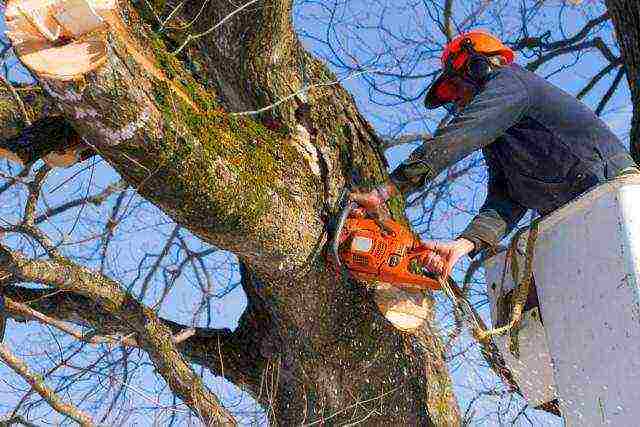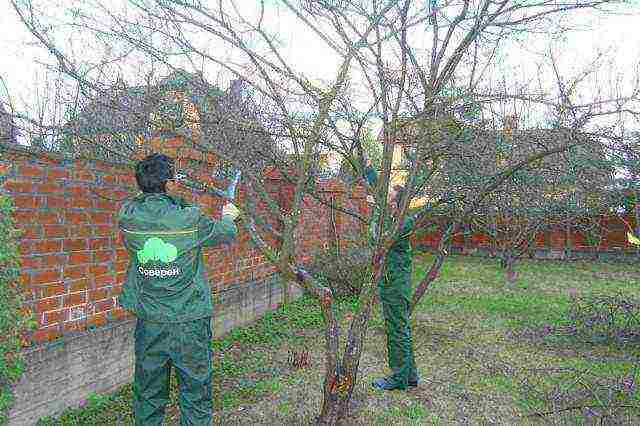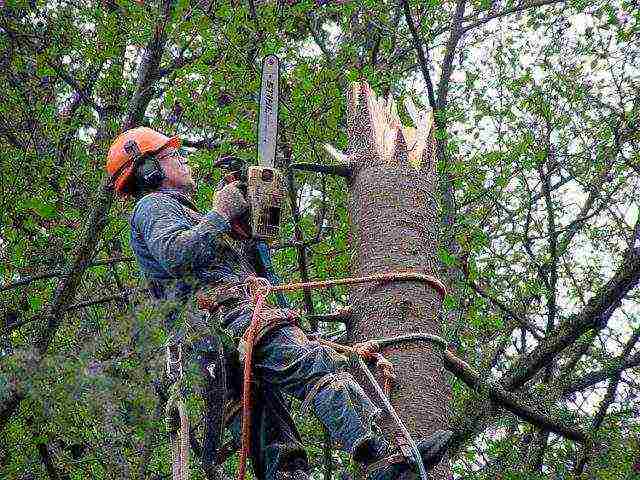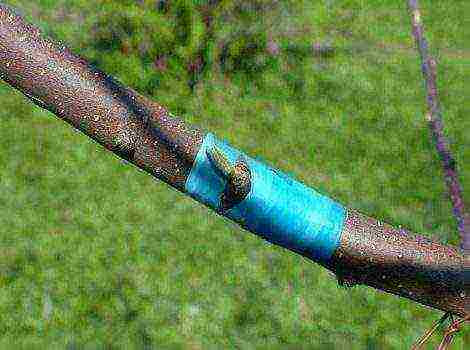Content [show]
How and when is it best to prune trees
A tree may need proper pruning in the fall for a variety of reasons:
- Removal of diseased or wind-damaged branches;
- Reduction of the crown, for the renewal of branches and better air circulation;
- Decrease in height;
- Removal of interfering lower branches;
- Formation for design solutions;
- Increased yield.
Once the decision to trim has been made, consider whether you should do the work yourself. If you have a large tree in your area where you want to remove the large branches at the top of the crown, it is best to hire a specialist. In particular, lifters and heavy chain saws may be required for trimming. This is a job that should be left to trained and experienced professionals.
When is the best time to prune trees: in spring or autumn?
Pruning time in the garden always depends on the type and method used. Thus, it is produced at different times of the year, in any season, but preference is given to the spring period, before the buds are swollen. Dead branches can and should be removed throughout the entire annual cycle.

Spring
Pruning to enhance growth is recommended in spring. This is because nutrients are distributed from the roots and perennial parts to the younger parts of growth and fruiting. It is best to choose a period immediately before the start of sap flow.that will have a beneficial effect on pruning. Shrubs that bloom in spring should not be pruned.

Autumn winter
Pruning in the autumn and winter seasons is often carried out in areas where it is predominantly warm and there is no severe frost. Otherwise, there is a risk of damage to the bark and wood in the place where the cut was made by extreme cold or sunburn.
When planning pruning, it is important to remember that the temperature should not drop below -8 degrees. Pruning during this period minimizes sap loss and subsequent stress on the tree. It will also minimize the risk of fungal or insect infestation, as the fungus and insects are likely to be dormant. Finally, in the case of deciduous trees, pruning after the fall will give you a better idea of how the trunk will change. Pruning fruit trees is not recommended in the fall.
Summer
Gardeners rarely prefer summer pruning, since when the buds are swollen and the tree is blooming, ringlets can be damaged, and in the summer the branches will have to be removed with the harvest. However, it makes sense during this period to engage in pinching shoots that do not require strong growth., as well as the removal of tops that appeared after a large cut.
Pruning tools
The tool recommendations are pretty straightforward. To properly prune trees and shrubs, buy the best tools you can afford and keep them in good condition.
Here are the basic tools:
- Pruner. The use of ratchet instruments is not recommended. It is best to choose a regular and comfortable pruner.
- Garden hacksaw. This is a specialized hacksaw that tapers towards the end of its blade. The teeth are designed to prevent the hacksaw from clogging up with sawdust. It is not recommended to use a construction hacksaw. For comfortable work, purchase a tool by profile.
- Air secateurs. This pruner is used for hard-to-reach areas of the tree. It is a bar on which a secateurs are attached, which is activated by means of a lever and a rope.

It is necessary to monitor the condition of the instrument. Sharp blades must be used to avoid damaging the trunk or bark. Otherwise, there is a risk of the appearance of surfaces susceptible to contamination with harmful microorganisms. Tree diseases are easily spread by contaminated tools.
How to properly prune trees and shrubs in the garden?
common goal - cut off the unwanted branch, while keeping the trunk intact. The most common mistake is cutting a branch too close or too far from the trunk. Or, by disrupting the sequence, they damage the bark, especially when pruning large branches.
Depending on the purpose of the work being carried out, you can determine which technology to use.
Kidney cut
Using this pruning method, you can, for example, change the direction of growth of branches depending on your needs. You need to choose a bud located on a one-year-old shoot that grows in the right direction. This cut is made at an angle of 45 degrees to the branch.
The pruning shear blade should point towards the remaining part of the tree. Pruning is done by forming a small angle so that the bud remains intact, but at the same time does not form a stump. The kidney will dry out if it does not receive the necessary substances. This happens when a very sharp cut is made that hits the kidney. It must be remembered here that our goal is for the bud to form a shoot.
At the same time, if a stump is left, then it may dry out, and the bud will not give a new shoot. Such a stump can only be left when pruning a shrub.

Ring cut
When using this method, the entire branch is pruned. Depending on the thickness, pruning shears can be used. To avoid a protruding stump and at the same time a "cut" does not occur, a cut should be made along the outer surface of the ring. The rings are located at the junctions of the branches.
Side branch cut
If you want to leave a side branch and continue growing in its direction, you must cut off the unnecessary branch. It turns out that the slice in relation to the left branch will become its continuation.
How much to trim?
Do not cut more than 25% of the tree branches. When deciding how much to trim, you need to focus on the bare minimum.
Make sure the live branches are at least 2/3 of the tree's height. Removing more than necessary will increase the risk of damage to the tree. Sometimes pruning is forced. For example, wind damage, height reduction due to power lines, municipal crown raising requirements, etc. Even so, trim as little as possible.
Care after pruning
Garden varnish, paints based on vegetable drying oil, petrolatum, etc. are suitable for covering the sections. Branches located on the periphery of the crown, the diameter of which is less than 2 cm, are not lubricated.
Try to further monitor the condition of the tree and heal the resulting wounds, if necessary. If you notice any peculiarities in how the tree reacts to pruning, try to apply the experience gained in further maintenance.


